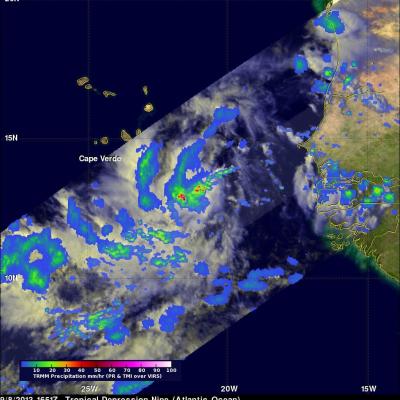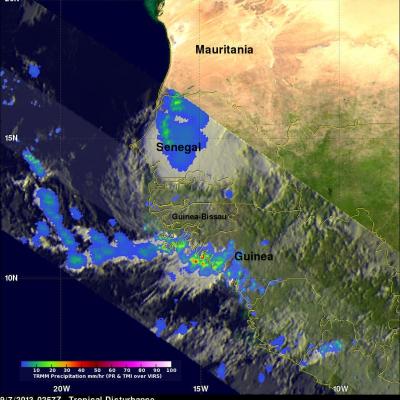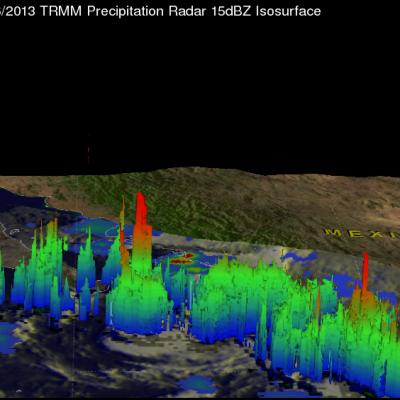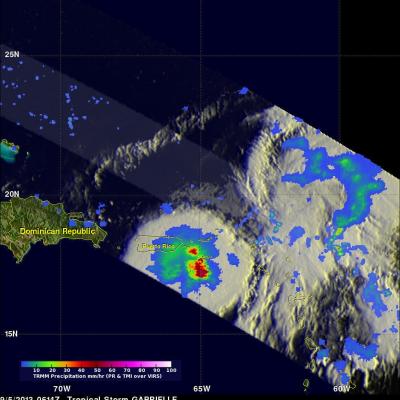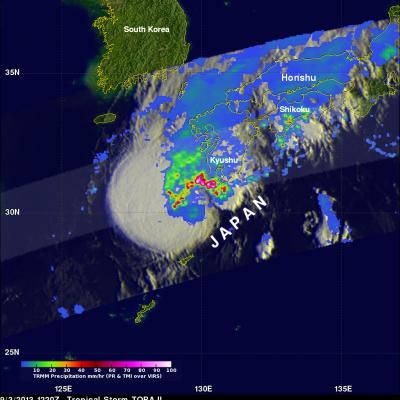Tropical Depression Nine Forms Near Cape Verde Islands
As predicted by the National Hurricane Center (NHC) tropical depression Nine formed with a strong tropical wave that moved from the African coast to an area south of the Cape Verde Islands. The low pressure center was designated tropical depression Nine at 2100 UTC (5PM EDT). The TRMM satellite flew directly above the developing tropical depression earlier at 1651 UTC (12:51 PM EDT). This TRMM pass found rain falling at a rate of over 101mm/hr (~4 inches) near the center of the developing tropical depression. TRMM's PR instrument was used to show a 3-D view of TD9. Radar reflectivity values


